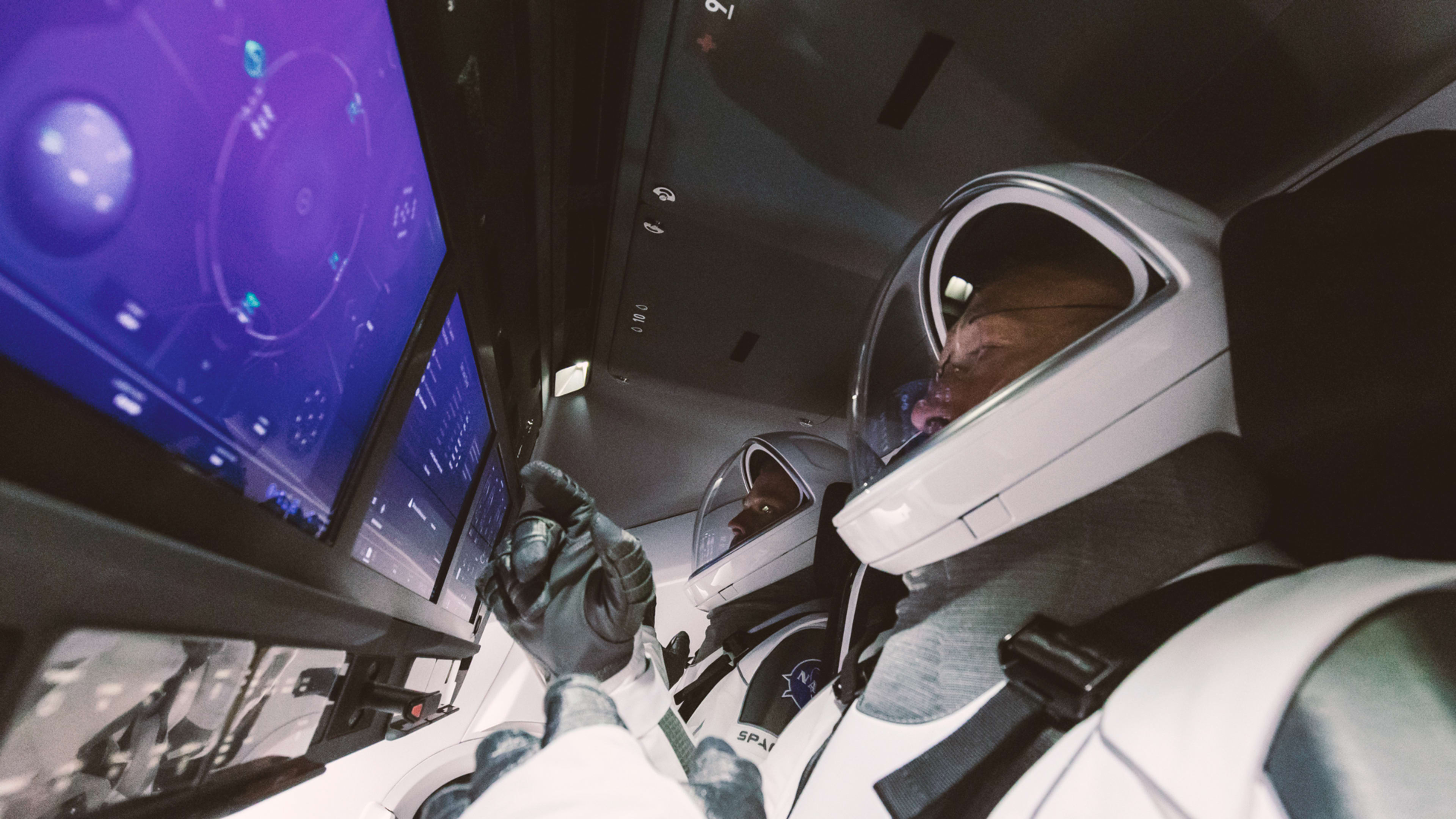It takes about nine minutes to go from the Kennedy Space Center to Earth orbit, but it’s been almost nine years since anybody took that route to space.
That longest-ever gap between American human space launches should end at 4:33 p.m. EST on Wednesday when NASA astronauts Bob Behnken and Doug Hurley are set to lift off aboard a SpaceX Dragon capsule atop a Falcon 9 rocket.
The launch—which you can watch streamed on NASA’s site along with a series of virtual events for everybody shut in by the coronavirus pandemic—will make Dragon the first privately built vehicle to carry people to orbit. And it will break a Russian monopoly on crew transport to the International Space Station that’s seen the U.S. cost for a ride on a Soyuz spacecraft steadily increase.
It’s been a long, rough road to the stars for Hawthorne, California-based SpaceX.
When the final space shuttle launch happened on July 8, 2011, SpaceX had flown the cargo version of Dragon once. The firm was still small enough to invite Twitter followers to visit its Cape Canaveral, Florida, facilities to see that capsule, charred around its base from reentry into Earth’s atmosphere.
NASA had already decided that the next U.S.-launched ISS mission would involve somebody else’s spacecraft, but not necessarily SpaceX’s.
President Obama set that course in 2010 when he canceled an overbudget NASA project for a low-Earth-orbit rocket based on space shuttle components and directed the agency to outsource that mission to private industry. That built on an initiative launched under George W. Bush’s administration for commercial cargo delivery to the ISS that gave SpaceX its first NASA work.
About time
Back when President Obama turned part of NASA’s traditional domain over to private enterprise, the wait for the next U.S. launch of astronauts wasn’t supposed to be too long—maybe just three years—although the idea of any gap was upsetting.
Nicole Stott, a crew member on the final flight of the shuttle Discovery, recalled her thoughts on exiting that orbiter after its March 9, 2011, landing in a phone interview on Tuesday: “Can’t we please roll this back to the Orbiter Processing Facility and get this ready again?”
But Congress consistently underfunded NASA’s commercial-space efforts in favor of the agency’s Space Launch System heavy-lift rocket and its Orion deep-space capsule.
Keith Cowling, NASA WatchSpaceX had the luxury of picking the best lessons learned from NASA and the private sector.”
Cady Coleman, another former astronaut, notes that NASA had warned Congress for years that it needed a shuttle replacement. Her thought in a phone interview Tuesday: “We don’t have a system that looks that far ahead.”
NASA awarded commercial-crew contracts in September 2014: $4.2 billion to Boeing for its CST-100 Starliner capsule and $2.6 billion to SpaceX for a crewed version of Dragon.
By April of 2017, the gap between human launches from U.S. soil exceeded the five years and almost nine months separating the July 1975 Apollo-Soyuz Test Project and the shuttle’s April 1981 debut.
SpaceX suffered such setbacks as a Falcon 9 exploding minutes after a 2015 launch and another blowing up during a 2016 pad test, even as it advanced toward landing its spent first stages for reuse.
Its triumphant test flight of an unmanned Crew Dragon in March 2019 was marred by that capsule exploding later on the ground because of flawed plumbing in its launch-escape rockets.
That last accident gave Boeing a last chance to beat SpaceX to the ISS and claim the American flag left there by the final shuttle mission. But the Starliner’s December 2019 unmanned debut went awry when software glitches prevented it from reaching the ISS.
SpaceX, meanwhile, ultimately proved itself an organization that could meet NASA’s strict dictates and work rapidly to fix problems.
“We’ve done a massive amount of testing, pushing all the corner cases,” SpaceX founder Elon Musk said at the Satellite 2020 conference in Washington this March before declaring that his “hat is off” to SpaceX and NASA engineers.
“SpaceX had the luxury of picking the best lessons learned from NASA and also from the existing private sector and then mixing them with modern continuous improvement concepts taken from Silicon Valley and elsewhere,” wrote Cowing.
NASA’s investment in crew transportation now seems one of the best bargains in government procurement. Especially compared to the SLS; in March, NASA’s inspector general estimated that the SLS rocket’s costs will hit $18.3 billion by a hoped-for 2021 launch.
First, though, SpaceX must successfully return America to human spaceflight from KSC’s Launch Complex 39A—the starting point of Apollo voyages to the moon and most shuttle missions.
Both Stott and Coleman said they’d gladly accept a ride on Crew Dragon. But instead they’ll have to watch from a distance like the rest of us—Stott from a beach in Florida near her house, Coleman in a New York TV studio as part of National Geographic TV’s coverage.
“It’s a very personal feeling for me,” Stott said, noting that Behnken and Hurley joined NASA at the same time as her. “I’ll be clicking through the milestones that I know are critical.”
Success for SpaceX will not only put American astronauts back in American saddles but crack open new possibilities for cheaper space flight that might not seem obvious now. Coleman compared it to people’s contemporary reactions to the transcontinental railroad and the first airplanes: “They couldn’t imagine what we would do with that.”
Recognize your brand’s excellence by applying to this year’s Brands That Matter Awards before the early-rate deadline, May 3.
